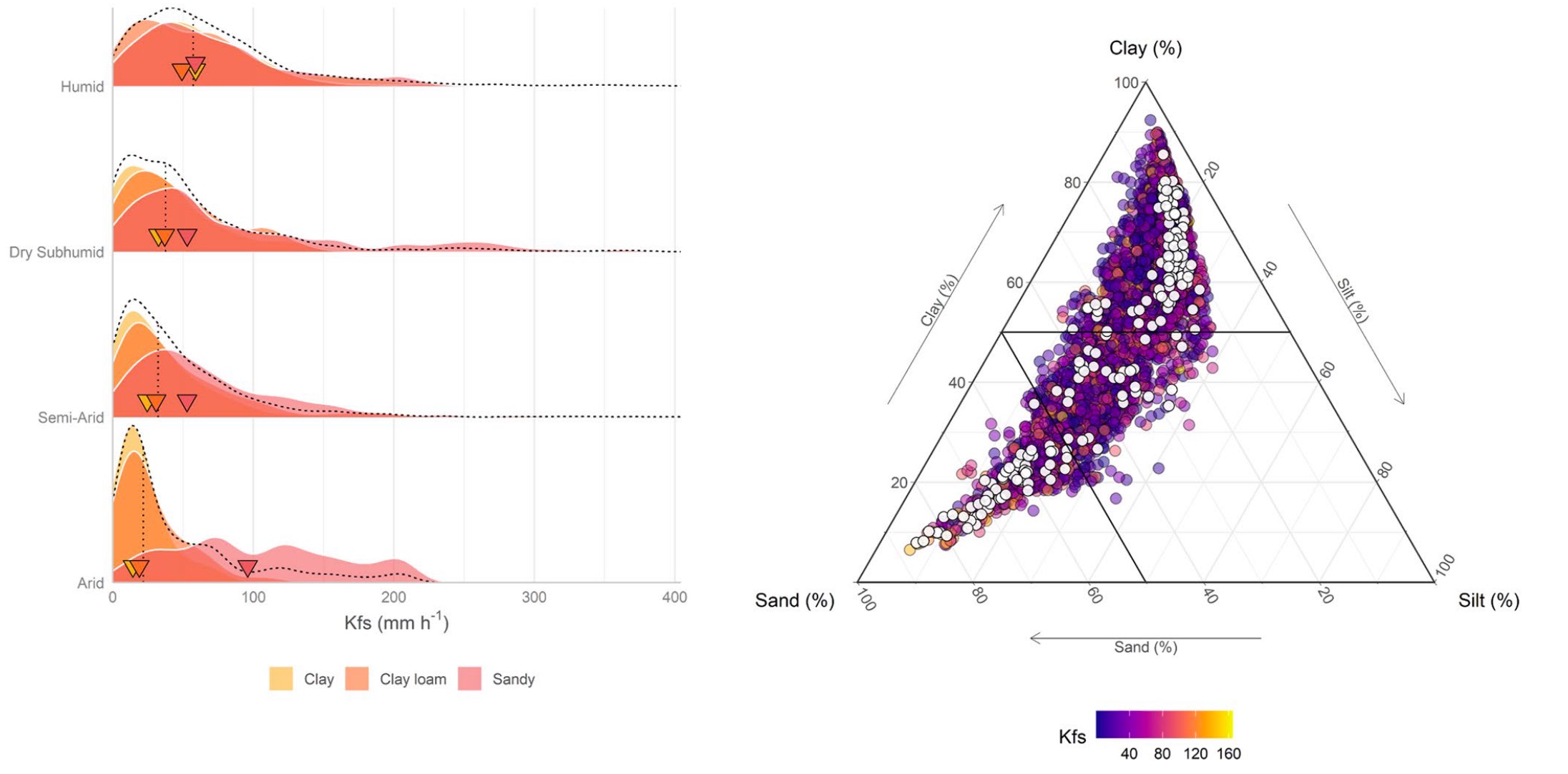
This paper uses the LDSF database on soil infiltration to investigate the determinants of soil field-saturated hydraulic conductivity across Sub-Saharan Africa.
Abstract
Soil infiltration is critical for water security and related ecosystem services. This infiltration, the ability of soils to absorb water at their surface, is controlled by the soil hydraulic conductivity. Despite recent efforts in assembling measurements of soil hydraulic conductivity, global databases and derived pedotransfer functions lack coverage in the tropics. Here, we present soil infiltration measurements and other indicators of soil and land health collected systematically in 3,573 plots from 83 100 km2 sites across 19 countries in sub-Saharan Africa. We use these data to (a) determine field-saturated hydraulic conductivity (Kfs) and (b) explore which variables best predict variation in Kfs. Our results show that sand content, soil organic carbon (SOC), and woody cover had a positive relationship with Kfs, whereas grazing intensity and soil pH had a negative relationship. Our findings highlight that, despite soil texture being important, structure also plays a critical role. These results indicate considerable potential to improve soil hydrological functioning through management and restoration practices that target soil structure. Enhancing SOC content, limiting animal stocking, promoting trees, shrubs, and other vegetation cover, and preventing soil erosion can increase Kfs and improve water security. This data set can contribute to improving Earth system and land surface models for applications in Africa.